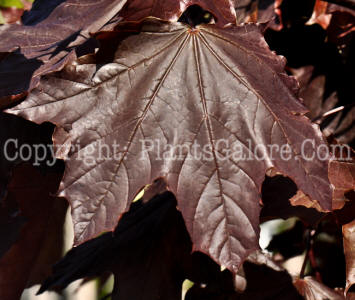|
|
 |
Acer platanoides |
 |
Norway Maple |
 |
 |
  |
3 |
 |
Northern Europe |
 |
 |
 |
Upright, then broad-spreading,
dense, with a rounded head. |
 |
40-50 (up to 90) feet tall with
a similar spread. |
 |
Flowers are
monoecious, yellowish, ⅓ inch across, produced on erect,
many flowered corymbs in great
abundance, showy. |
 |
April |
 |
Leaves are opposite, simple,
4-7 inches wide, 5 lobed, each lobe sharply
pointed, remotely dentate, lustrous dark green
in color, with milky sap in the petiole. |
 |
Fall color is golden-yellow,
usually quite late in developing color. |
 |
Buds are oval, large, to ½
inch long on the terminals, reddish to maroon in
color, “football-shaped”. |
 |
Bark is dark gray, evenly and
predictably-ridged and furrowed. |
 |
Fruit is a samara, 1½-2
inches long, the wings
being nearly horizontal, ripening in September-October |
 |
|
 |
|
|
 |
 |
- 'Cleveland' - oval and upright in habit
- 'Columnare' - narrowly columnar
- 'Crimson King' - leaves red throughout the entire growing season.
- 'Erectum' - leaves larger than those of 'Columnare' and the lateral branches short and stubby.
A tree 30 feet tall had a total branch spread of only 6
feet
- 'Clohosum' - grafted
onto a single trunk about 6-7 feet tall because of
its globe-shaped, densely branched habit.
-
'Schwedleri' - an old-fashioned variety, the leaves of
which first open red in the spring but gradually turn
green in the early summer.
- 'Crimson
King', 'Fassen's Black' and 'Goldsworth Purple' retain
their red foliage color throughout the growing season.
- 'Summer Shade' - upright growing and maintains a single leader. The
foliage is more leathery than the other varieties.
|
 |
 
The Norway maple is commonly used as a street tree or in
parks. It grows quickly and seems to tolerate the city
environment and, unlike other maples, is tolerant of dry
conditions. That is the good news.
In the home landscape, it is generally not a
desirable tree. Perhaps the key negative is that it has
very large leaves and castes a dense, dark shade. It
also has a pretty shallow root system which competes
with grass and other ornamentals. If you see a large
tree in someone's yard and there is only bare soil
beneath the leaf canopy, it is probably a Norway maple.
Don't confuse this species with its more desirable
cousin, Acer rubrum
(Red Maple). Two commonly grown cultivars of Norway
maple,'Crimson King' and 'Crimson Queen' are often mistakenly called "red
maples".
|
 |
|
 |
|
|

